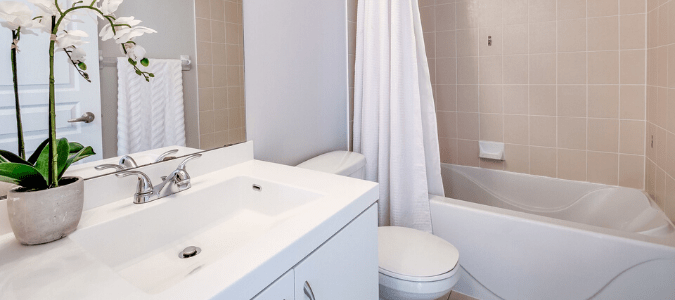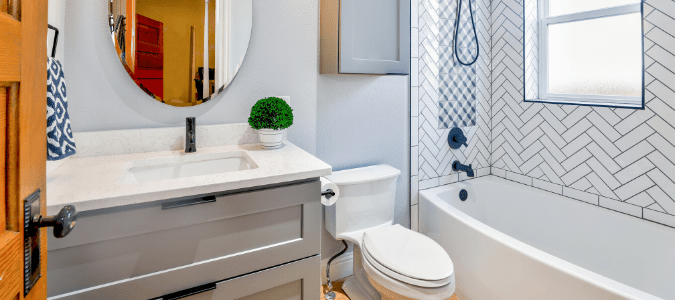Sometimes, it is pretty obvious a new toilet needs to be on the to-do list. Maybe the bowl is cracked, or it backs up too often for your comfort. It could be leaking and causing damage to your bathroom floors. No matter what is going on, there are a few things you should consider before giving your current fixture a final flush.
If you have checked the basics of your current commode, from the water level in the tank to any easy-to-remove material that could be causing a clog, it is time to contact a professional. Toilet components do wear out over time, and if you have signs of hard water in your home, the lifespan for those parts is even shorter. A licensed professional can give you the real picture on whether the toilet is fixable or ready for removal.
Some issues are more problematic than others. If your toilet leaks when flushed, for example, it can not only waste water but can also seep under your flooring and cause damage that you might not see but that is a potential disaster just the same. A hissing sound or constant running in the tank will pump up your utility bill as well. It’s worth the discussion with someone who knows all the pros and cons of a repair versus a replacement.
How Long Do Toilets Last?
Most toilets will last 20 to 25 years and some toilets can last for 50 years! Many factors from how much it is used to the type of water and piping your home uses can affect how long you can expect it to function well. That said, if you have had the same toilet for a couple of decades, getting a new one is likely the best option. Especially if you have already had to repair it a number of times!
Types of Toilets
Once you’ve made a decision to get a new unit, you have more options to consider than you might think! Let’s look at some of the types of toilets that are available these days, and the features and benefits of each.
Two-Piece Toilets
This type of fixture is basically two parts, a bowl and a tank, that are connected. The tank sits on top of the bowl, like most toilets you have probably seen. Because there are two pieces, this type of toilet offers flexibility for height adjustments. Another pro for this type is that if it needs repairs or replacement down the line, you might be able to just replace the part that is no longer functioning instead of getting rid of the whole thing. On the minus side, two-piecers are a bit more difficult to keep clean. Also, installation can run you more since the parts must be assembled and joined at the time of installation.
One-Piece Toilets
This type looks very similar to a two-piece toilet, but is actually one complete unit. These fixtures often look a little sleeker than one with two pieces and can cost less to install, because assembly is minimal. If you have a smaller area for your toilet, consider that one-piece types also generally take up less space. However, there are a couple of “cons” to consider with a one-piece toilet. They are generally a higher price and have steeper shipping costs, because of how heavy it is. Either a one- or two-piece toilet can support extra comforts such as a bidet and environmentally friendly features such as low water flow. A licensed professional can give you an estimate on the cost differences in the installation and the unit itself.
Wall-Mount Toilets
If you are into contemporary design, a sleek wall-hung toilet might be just the thing. They look great and come in a wide range of price points. You can also mount it at any height that is most comfortable for you. Before you run out and buy one, be sure to talk to a professional. These fixtures require special preparation and care in order to work correctly. For instance, the wall on which you hang the toilet has to be at least 10 inches thick. So, often, people have to build up an extra portion of wall to make it work. There are also weight limits to consider, as well as space requirements around the toilet. Make sure you get all your questions answered before you take the leap with this type.
Single-Flush Toilets
These toilets are what you’ll find in most homes. There is one lever to flush, so the same amount of water is used for each flush no matter how much or how little you need. Single-flush fixtures work well in places with heavy use, such as a home’s main bathroom or a public restroom. It’s not complicated, and the water level stays pretty even all the time. Lower cost upfront is a bonus, as is the fact that a lot is known about how to repair these toilets.
Dual-Flush Toilets
If you are looking to be kind to the environment with your new toilet, a dual-flush fixture is a good choice. As evidenced by the name, this toilet offers two separate flushing mechanisms. There is one flush that uses more water than the other, depending on the need. Dual-flush toilets are better suited to homes, not public places. They also look sleek when compared to the traditional single-flush variety. If you have small children, older adults or anyone with strength limitations at home, this might not be the best choice because it does take extra pressure to operate correctly.
Gravity-Feed Toilets
This type of toilet might sound space age, but in reality, it’s the same kind of toilet we all grew up with and know so well. No mechanism forces waste out of the toilet; the entire process relies on the pull of gravity. The trick with these types is all in the tank. If you don’t set the fill valve correctly, you will have trouble getting the proper flush and may actually cause a leak. The upside is that these have been around so long that professionals are skilled in diagnosing and fixing issues.
Pressure-Assisted Toilets
For this fixture, gravity still does its tricks, but another chamber inside the tank adds extra pressure to help the bowl clear out. This kind of toilet is best suited to a professional setting. This type of toilet typically costs more upfront and for any repairs needed. Weigh these factors against your need for a stronger flush.
Power-Assisted Toilets
A step up from pressure-assisted toilets is this type, using a tank-in-tank system. The pressure in the tank builds up to a certain level and then shoots the water into the bowl. This power is great if your family tends to clog toilets a lot or if you want to know that one push of the flushing mechanism is always going to do the job. Because these fixtures do have more complex engineering, it is essential that you talk to a licensed professional. They have experience installing and working on these types of toilets. They can help when making the installation decision and when you need plumbing repairs.
Water-Saving Toilets
Dual-flush toilets will generally save 20% of water used and can save you more than $100 a year to boot. That said, they also cost more upfront, so their main appeal is in the actual amount of water used. One bonus of going with a water-saving toilet is longevity. You can go about 30 years without needing a new one, with proper care!
Smart Toilets
If you have used a restroom at a movie theater or any other high-traffic business, you have probably used a smart toilet. These fixtures have sensors that measure how far away you are from the toilet, signaling it to flush. You can also wave a hand in front of the sensor to trigger the flushing. They cost more, but they are convenient to use and actually are friendly to the environment.
When it’s time to consider replacing your toilet, there are certainly a lot of options! Do your research to get an idea of what you would like best or what works for your family. Then talk with a professional, who can help you narrow down the choice to a fixture that fits your budget and lifestyle.
ABC Can Advise You on Your Toilet Options and Install It for You
There are lots of toilet options out there and it can be hard to narrow it down. Not to mention, it’s a big decision to replace your toilet. Whether you don’t know where to start or you already purchased a toilet and need it installed, our pros can help. ABC Home & Commercial Services has a team of licensed plumbers who can offer honest advice and install your toilet when the time comes. We can also help with any issues that arise, such as if your toilet won’t flush all the way.


